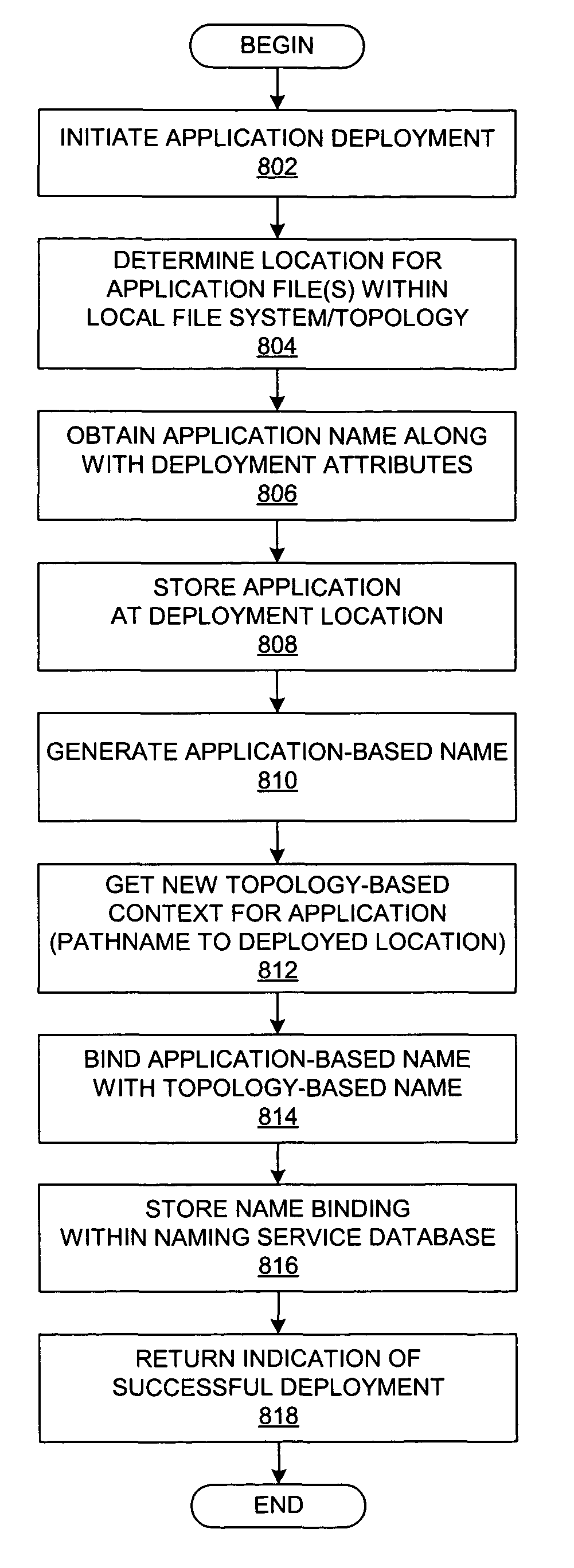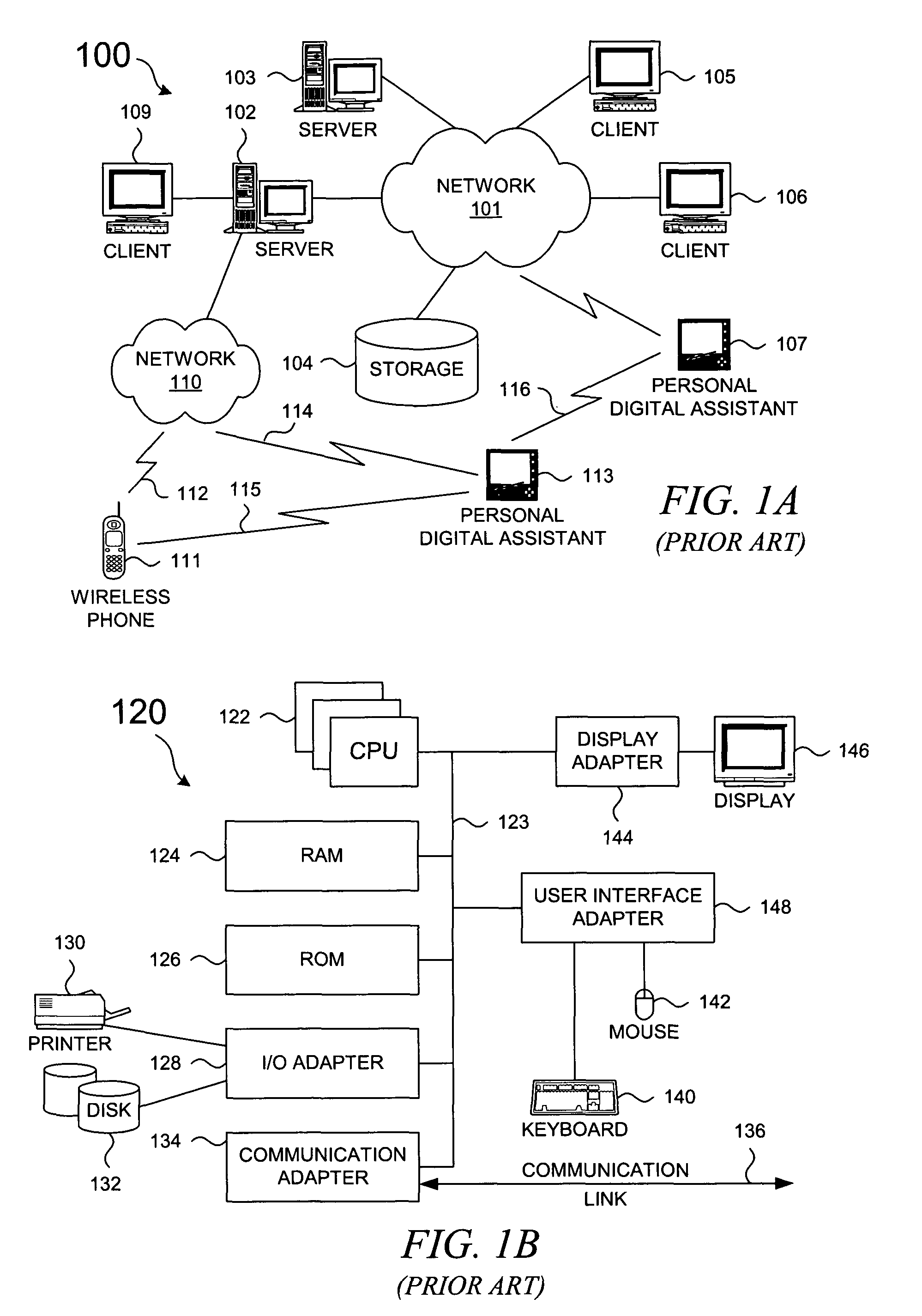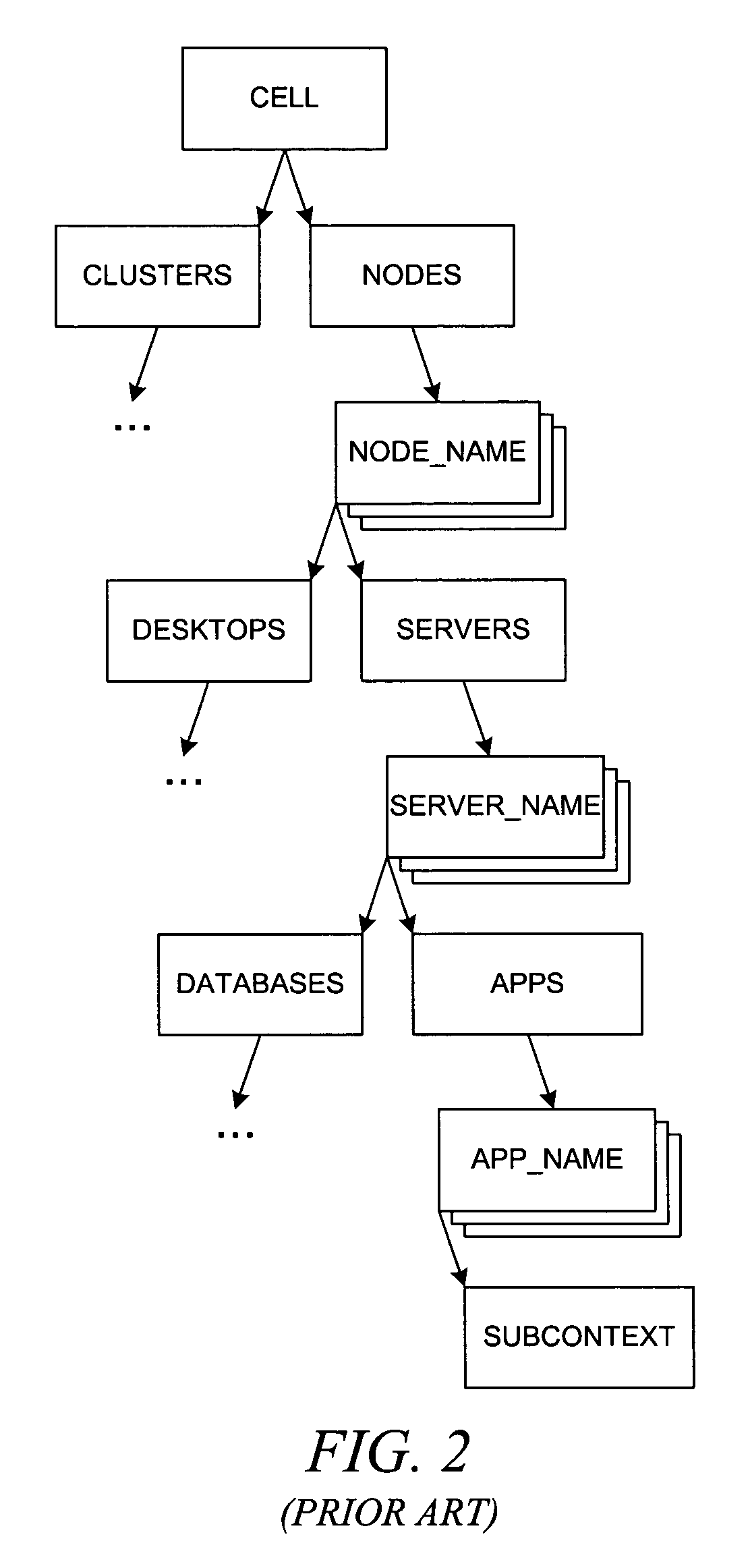Method and system for application installation and management using an application-based naming system including aliases
a technology of naming system and application, applied in the field of data processing system, can solve problems such as certain usability problems, installation of the same application on multiple servers,
- Summary
- Abstract
- Description
- Claims
- Application Information
AI Technical Summary
Benefits of technology
Problems solved by technology
Method used
Image
Examples
example 7-2
is similar to example 7-1 except that the deployment attribute in example 7-2 is set to “Verso-9-b” compared to the deployment attribute of “Vers0-9-a” in example 7-1. In example 7-2, “Vers0-9-a” is a deployment attribute that has been used as a context that organizes all files that are related to a particular deployed version (version 0.9 beta) of the “WebServ” application. Example 7-3: “ / server / serverX / DB2 / 2003Jan01 / ”
In example 7-3, “server” refers to a context that acts as a root within an application-based naming system. This particular context organizes all servers of a particular enterprise. “serverX” refers to a context for a particular server. “DB2” refers to a context that organizes all files relating to “DB2”, which is a particular application name. “2003Jan01” is a deployment attribute that has been used as a context that organizes all files that are related to a particular deployment of the “DB2” application, e.g., the deployment of the application that occurred on the...
example 7-4
is similar to example 7-3 except that the deployment attribute in example 7-4 is set to “2003July01” compared to the deployment attribute of “2003Jan01” in example 7-2. In example 7-4, “2003July01” is a deployment attribute that has been used as a context that organizes all files that are related to a particular deployment of the “DB2” application.
These deployment attributes, such as “Vers0-9-a” or “2003July01”, may originate from a variety of sources: from a system administrator; from a system management application that controls the deployment of applications; or from some other source.
With reference now to FIG. 8, a flowchart depicts an operation for deploying an application within a distributed data processing system that supports an application-based naming system. The process that is shown in FIG. 8 is substantially similar to the process that is shown in FIG. 3 except that FIG. 8 shows the use of application-based names. The operation that is depicted in FIG. 8 may be per...
PUM
 Login to View More
Login to View More Abstract
Description
Claims
Application Information
 Login to View More
Login to View More - R&D
- Intellectual Property
- Life Sciences
- Materials
- Tech Scout
- Unparalleled Data Quality
- Higher Quality Content
- 60% Fewer Hallucinations
Browse by: Latest US Patents, China's latest patents, Technical Efficacy Thesaurus, Application Domain, Technology Topic, Popular Technical Reports.
© 2025 PatSnap. All rights reserved.Legal|Privacy policy|Modern Slavery Act Transparency Statement|Sitemap|About US| Contact US: help@patsnap.com



